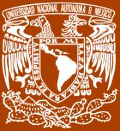The Devonian-Carboniferous boundary in the Graz Paleozoic (Eastern Alps, Austria) and its global significance
El límite Devónico-Carbonífero en el Paleozoico de Graz (Alpes orientales, Austria) y su importancia global
Sandra I. Kaiser1,*, Bernhard Hubmann2
1 State Museum of Natural History Stuttgart, Germany, Rosenstein 1, 70372 Stuttgart, Germany
2 Karl-Franzens University of Graz, Institute of Earth Sciences, Universitaetsplatz 3 8010 Graz, Austria.
Corresponding author: (S.I. Kaiser) This email address is being protected from spambots. You need JavaScript enabled to view it.
How to cite this article:
Kaiser, S.I., Hubmann, B., 2024, The Devonian-Carboniferous boundary in the Graz Paleozoic (Eastern Alps, Austria) and its global significance: Boletín de la Sociedad Geológica Mexicana, 76 (3), A210524. http://dx.doi.org/10.18268/BSGM2024v76n3a210524
Manuscript received: April 7, 2024; corrected manuscript received: April 28, 2024; manuscript accepted: May 12, 2024
ABSTRACT
Pelagic, outer-shelf sedimentary successions across the Devonian-Carboniferous boundary (DCB) in the western Graz Paleozoic at Trolp (Eastern Alps, Austria) display exceptional, continuous limestone facies of the Hangenberg Crisis interval. These enable the study of conodont successions, lithofacies, and geochemistry without noteworthy interruptions by siliciclastic intervals, which are equivalents of the Hangenberg Black Shale and Hangenberg Sandstone. The praesulcata, kockeli, and sulcata/ kuehni conodont Zones are recognized by stratigraphically significant markers in the early siphonodellids and early protognathodids within thin-bedded limestones. The major conodont biofacies change and initial mass extinction phase (costatus-kockeli Interregnum) of the Hangenberg Crisis is succeeded by radiations among conodonts in the kockeli and sulcata/kuehni Zones. Carbon isotopes (δ13Ccarb) record positive excursions and enhanced Corg burial episodes; the characteristic signals can be used as chemo-indicators of the early, middle and late phases of the Hangenberg Crisis. The global common Siphonodella sulcata Morphotype 5 and Protognathodus kuehni have their first occurrence at the base of the Tournaisian at Trolp and elsewhere in Europe, Asia and North Africa, and thus can be used to define the base of the sulcata/kuehni Zone and the current DCB level. `Protognathodus´ faunas with a high morphological variability are recorded in the praesulcata and kockeli Zones, but spread mainly in the sulcata/kuehni Zone, or even later in the lower Tournaisian. Therefore, the extended kockeli Zone suggested recently, and even leaves the current DCB level undivided, as well as the use of Protognathodus kockeli as index fossil for the DCB, are not applicable as suggested herein.
A precise biozonation concept as well as multidisciplinary approaches used at Trolp are needed for understanding ultimate causes of the 1st order Hangenberg mass extinctions and major environmental changes at the DCB. Multidisciplinary approaches comprise taxonomically significant index conodonts, extinctions and radiations, as well as lithofacies and isotopic analyses. These markers at Trolp can be well correlated with those from many other settings worldwide, reflecting the global significance of the Graz Paleozoic.
Keywords: Hangenberg Crisis, conodont mass extinctions, stable isotopes, Trolp quarry, Protognathodus fauna, kockeli Zone, sulcata/kuehni Zone.

